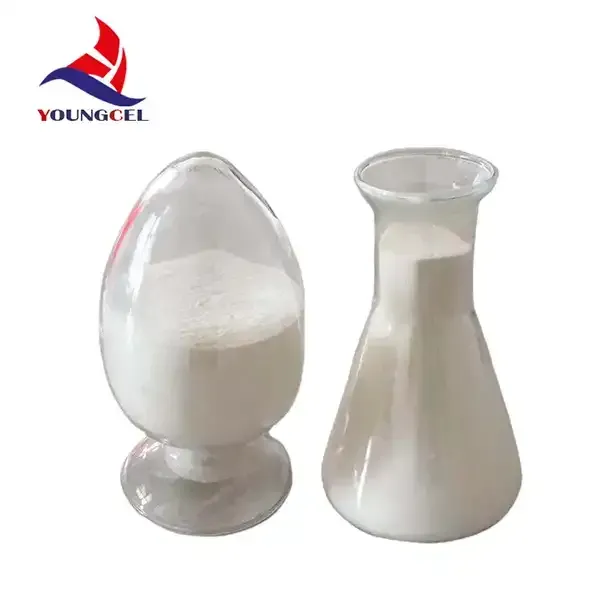Understanding Mortar and HPMC A Key to Improved Construction Materials
In the realm of construction and building materials, the significance of mortar cannot be understated. Particularly, the introduction of Hydroxypropyl Methylcellulose (HPMC) into mortar formulations has revolutionized the industry, enhancing both the performance and durability of construction products. This article delves into the properties of mortar and the role of HPMC in modern construction practices.
What is Mortar?
Mortar is a mixture of water, sand, and cement, which serves as a binding agent in masonry work. It is crucial for the construction of walls, floors, and various architectural features, ensuring stability and longevity. The primary functions of mortar include binding building materials together, acting as a cushion between bricks or stones, and providing resistance against external conditions.
Despite its essential role, traditional mortar mixes can be limited in their performance. Common challenges include issues such as workability, adhesion, and durability. This is where additives like HPMC come into play, offering a solution that significantly enhances the properties of mortar.
The Role of HPMC in Mortar
Hydroxypropyl Methylcellulose (HPMC) is a cellulose ether that has gained popularity as an additive in the formulation of mortars. It is recognized for its excellent water retention, improved workability, and enhanced adhesion properties. Here’s a breakdown of HPMC’s contributions to mortar performance
1. Increased Workability One of HPMC’s most notable benefits is its ability to improve the workability of mortar. When added to the mix, HPMC creates a smoother texture that makes it easier for workers to apply the mortar. This is particularly advantageous in complex masonry applications where precision is key.
2. Water Retention Traditional mortars can suffer from rapid water loss, leading to poor curing and compromised strength. HPMC minimizes the evaporation of water while the mortar is setting, allowing for more effective hydration of the cement particles. This water-retentive property helps in achieving higher compressive strengths and reduces the likelihood of cracks forming during the curing process.
mortar hpmc

3. Enhanced Adhesion HPMC also significantly improves the adhesion of mortar to substrates. This is essential for ensuring that the materials remain securely bonded together under various conditions. Enhanced adhesion means that structures are less susceptible to delamination or separation, contributing to their overall durability.
4. Versatility HPMC is compatible with various types of mortar, including thin-set mortars, repair mortars, and tile adhesives. This versatility makes it a valuable addition to any mortar formulation, allowing manufacturers to create specialized products that meet specific application requirements.
5. Control Over Setting Time By adjusting the amount of HPMC added to the mortar mix, manufacturers can control the setting time. This allows for greater flexibility in construction schedules, enabling workers to handle the mortar more comfortably before it sets and hardens.
Applications in Construction
The integration of HPMC into mortar has implications across various segments of the construction industry. In residential building, for instance, improved adhesion and workability mean that bricklaying can occur more efficiently, resulting in fewer delays. In commercial projects, the durability imparted by HPMC can lead to longer-lasting structures that require less maintenance over time.
Furthermore, the use of HPMC in exterior masonry applications is particularly beneficial, as it provides additional resistance to weathering and moisture ingress, which are critical factors in maintaining the integrity of buildings.
Conclusion
As the construction industry continues to evolve, the importance of enhancing traditional materials through innovative additives like HPMC cannot be overstated. By improving workability, water retention, and adhesion, HPMC not only contributes to the quality of mortar but also helps in the sustainable development of resilient structures. As builders and manufacturers embrace these advancements, the future of construction looks promising, with stronger, more durable, and more efficient building materials at the forefront. Integrating HPMC into mortar formulations is undoubtedly a step towards improving construction practices and meeting the demands of modern architecture.
-
Rdp Powder: Key Considerations for Wholesalers in the Building Materials IndustryNewsJul.08,2025
-
Key Considerations for Wholesalers: Navigating the World of Hpmc - Based ProductsNewsJul.08,2025
-
Hpmc Detergent: Key Considerations for WholesalersNewsJul.08,2025
-
Key Considerations for Wholesalers: China Hpmc For Tile Adhesive, Coating Additives, Concrete Additives, and MoreNewsJul.08,2025
-
Crucial Considerations for Wholesalers: Navigating the World of Construction MaterialsNewsJul.08,2025
-
Key Considerations for Wholesalers Sourcing Additive For Cement, Additive For Concrete, Additive For Putty from Additive Manufacturer Shijiazhuang Gaocheng District Yongfeng Cellulose Co., Ltd.NewsJul.08,2025




